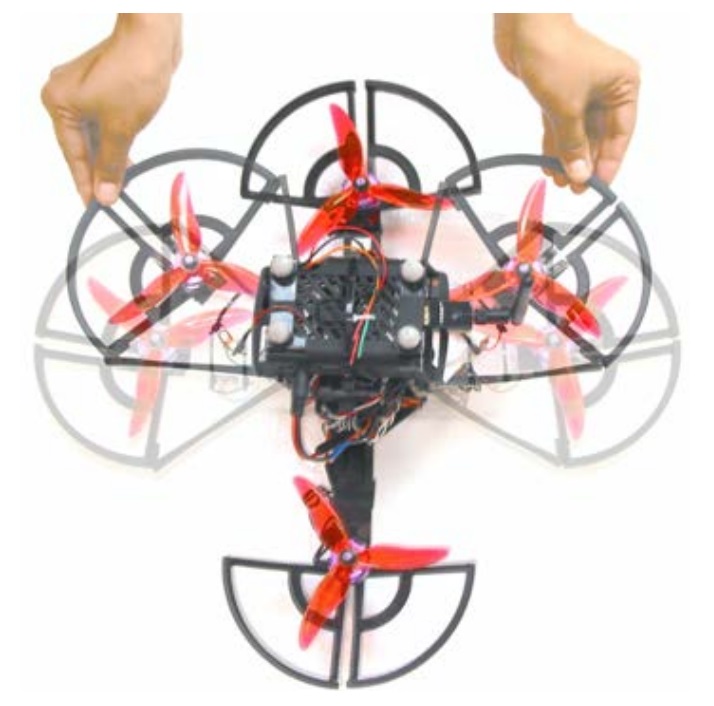For a rigid quadrotor, flying through constrained spaces often relies on computer vision techniques to execute aggressive maneuvers or performing real-time trajectory re-planning to avoid cluttered areas. Alternatively, a quadrotor can have an adaptive morphology, where a folding mechanism helps the quadrotor fly through narrow apertures. In previous designs, additional actuators were needed to control the adaptive morphology, which increases the total weight of the system and decreases its power-to-weight ratio. Despite quadrotor designs with adaptive morphologies that do not use additional actuators, such approaches still choose to avoid interactions with the edges of passages and holes during fly-through, as these interactions present significant challenges for vehicle stability.
Researchers at Arizona State University have developed a novel quadrotor with a variable geometry to physically interact with cluttered environments and fly through narrow gaps and passageways. This compliant quadrotor with passive morphing capabilities is designed using torsional springs at every arm hinge to allow for rotation driven by external forces.
Related Publication: Design and Control of SQUEEZE: A Spring-augmented QUadrotor for intEractions with the Environment to squeeZE-and-fly
A video demonstration can be viewed here: Link

Benefits and Advantages:
- Low mechanical complexity
- Minimal added weight compared to existing morphing quadrotors
- System features an adaptive controller for trajectory tracking as well as an admittance controller to account for changes in yaw due to physical interactions during flight